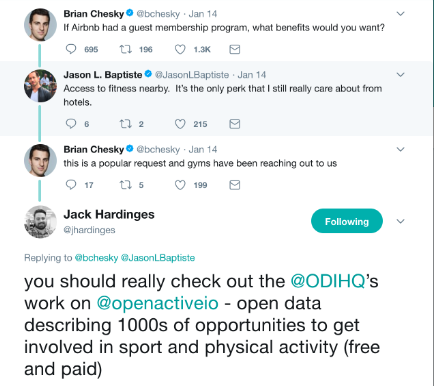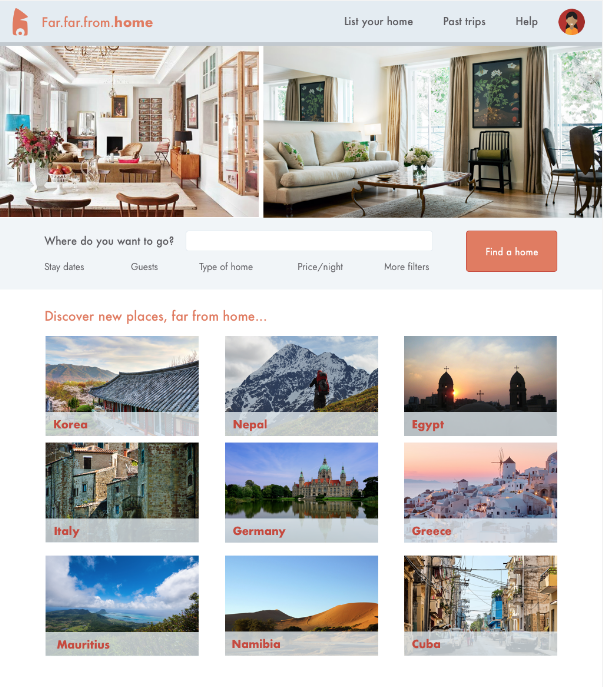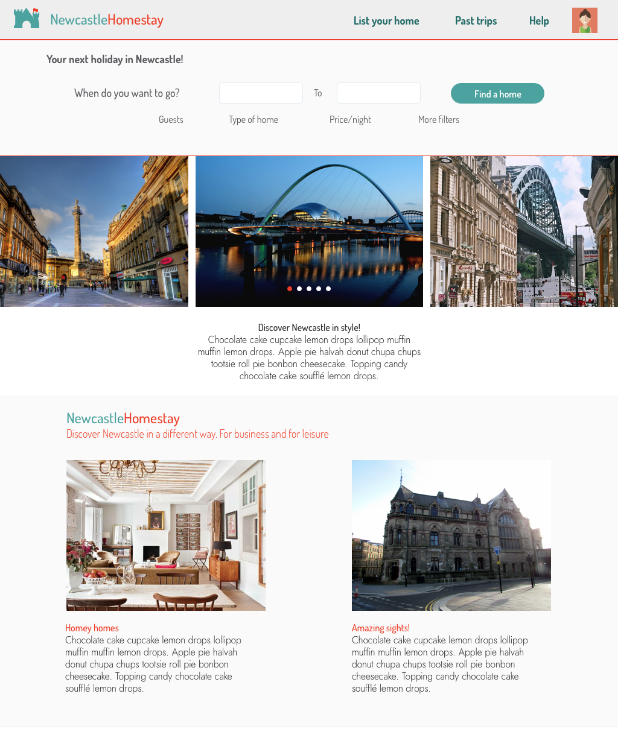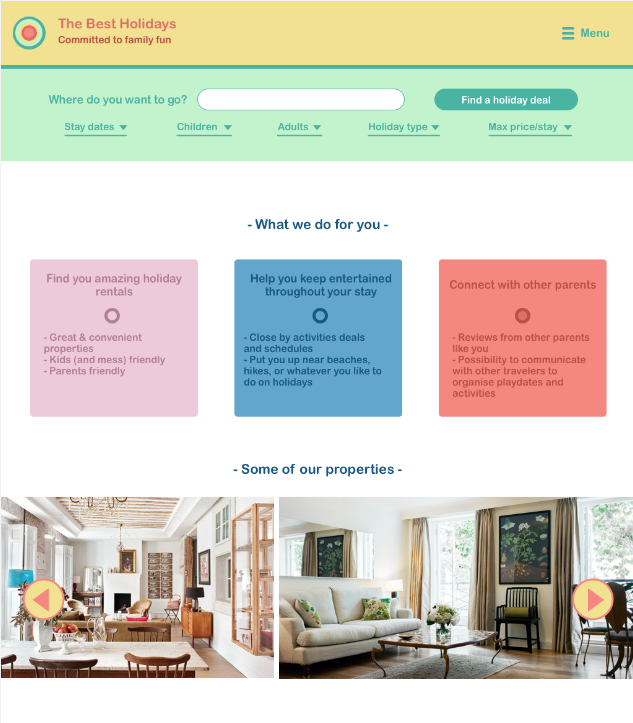
For the past few months, as one of our innovation programme projects, we have been exploring the role of data in understanding and measuring the impact of – and informing the debate about – the emerging peer-to-peer accommodation sector.
Most of the exploration into the data itself focused on data about the sector and monitoring its various impacts on local areas, but we also wanted to look at it from the other side of the equation: could data, especially open data – covering other sectors and areas of society – benefit both communities and actors within the peer-to-peer accommodation sector?
By asking this question, we are working to understand how data can support a better experience for both peer-to-peer accommodation sector users and for the communities they visit. We think that by working with data about local communities and local businesses, peer-to-peer accommodation platforms can support and engage with local communities and create mutual economic opportunities. We have looked at the specific example of peer-to-peer accommodation platforms working with data about physical activities, however, there are other data types that could be connected. These range from local public services and community activities to shops and cinemas. There are also different platforms and services which could create more opportunities and a richer environment for innovation, social and economic value.
Early in the project, our team thought we should explore how existing open data – a lot of which is inherently about places – could be used by platforms to enrich the experience of peer-to-peer accommodation. One of our motivations was to address the fear we were hearing from users and local authorities that communities are being impacted negatively by peer-to-peer accommodation platforms, or the people brought into their neighbourhoods through these platforms. These fears included noise pollution, dangerous or careless behavior, disruption of local communities and displacement of inhabitants, among others. We wondered if this effect could be minimized by making platform users more aware of their surroundings, which in turn would help them bolster the local economy, participate more in local life and help create a more positive environment.
Stewardship v integration
Unlike data gathered and maintained directly by peer-to-peer platforms about the neighbourhoods in which they offer accommodation, we started to realise that integrating with third party data has its challenges as well as advantages, and requires new approaches. Integrating open data maintained by third parties into peer-to-peer platforms would mean that different platforms could access, use, and even contribute to any given locally focused dataset in completely different ways. And so we set out to develop several prototypes around a single dataset to explore this hypothesis.
It is worth highlighting that these same benefits and challenges might apply to any service integrating with any open data, and so these prototypes will prove useful to surface those issues for other readers, regardless of sector.
Augmenting the experience with physical activity data
Based on user interviews, we considered a number of sources of data that could be considered useful in tailoring trips to individual needs, including data about bus stops and times, local restaurants, independent shops, local event venues and things to do, as well as when an area is busy versus when it is not. There might also be an interest in data about the area, for example census or economic data, or crime statistics. Some of this data already exists as open data in certain cities and councils, but it probably hasn’t been collected in a standardised, usable way across the different regions of the country.
Instead, we focused on physical activity data, partly because we had seen anecdotal interest for the mixing of the two, as illustrated in this Twitter exchange:

Physical activity data is inherently local and becoming broadly available across geographies. Unlike practical or transactional data – such as waste collection or the location of bus stop – data about sports and activities lends itself well to being used creatively by peer-to-peer accommodation platforms in ways that could open up opportunities for innovative added value to their services. This gives us a richer variety of uses for our prototypes than if we had worked with other open data sources such as bin collection or parking data.
Finding and choosing the most useful dataset
At the ODI we have been leading a sector programme on physical activity data called OpenActive, through which a lot of open data on activity opportunities (classes, outings, etc) are being published in a decentralised way by organisations and communities, using a standard we helped develop. For this set of prototypes, however, we were more interested in the location of facilities for sport and physical activities than in the activity opportunities themselves. For the purpose of our prototypes, the Active Places Power open dataset published by Sport England seemed most appropriate: with its focus on facilities, the Active Places Power set includes more consistent data about geographical location of the facilities than in the OpenActive datasets, where precise latitude and longitude information were made optional to make publishing more straightforward.
The Active Places Power dataset is focused on facilities around the UK and is managed and produced by Sport England as part of their work to assess those facilities, and is a readily available dataset for exploring the questions we set out in this report. However, there is a much wider set of locations where physical activities take place, such as parks and public spaces. Over time, we hope that OpenActive datasets will help reveal a broader set of locations outside sports facilities, and grow to include identifiers for those places.
Three prototypes
We ended up developing three distinct prototypes, each interacting and integrating with the same dataset:
- How might a peer-to-peer accommodation platform integrate with an open dataset to offer a richer experience, while controlling risks of using data they do not directly gather or maintain?
- How might a peer-to-peer accommodation platform use this same dataset with an approach that is more locally focussed, more actively engaged with the local community and responsive to local feedback?
- How might a more specialised peer-to-peer accommodation platform curate the same dataset, to add value beyond the display of information, but also as a vector for business development and partnership building – for example, to broker services between sports facilities and its accommodation seekers?
- Prototype one: Integrating with open, local data
- Prototype two: Integrated with the local data ecosystem
- Prototype three: Finding value in and adding value to data
- Conclusion
Prototype one: Integrating with open, local data

The platform “Far.far.from.home.com” adds value to their original offer by being more than a simple peer-to-peer property broker. They are a platform that would like their users to get the best experience possible out of the available rentals, and through their own research they have discovered that users want to take part in local community life and activities. In order to do that, they’ve decided to highlight local sports and activity centres.
Prototype two: Integrated with the local data ecosystem

This platform enables users to become part of the local data ecosystem for everyone’s benefit: the users can input their own local knowledge, the platforms benefit from more accurate information, and the open data becomes more accurate and useful for everyone.
Prototype three: Finding value in and adding value to data

This prototype explores how a peer-to-peer accommodation platform called The Best Holidays adds further value on top of an open dataset by curating it and augmenting it for their own users.
Conclusion
In this report we explored, through practical prototyping, how peer-to-peer accommodation platforms could use, integrate with and curate available open data sources to enhance the experience they offer their users. While we focussed on the peer-to-peer accommodation sector in this instance, we would like to point out that the same challenges and benefits would apply to any service wanting to integrate with open data, regardless of sector.